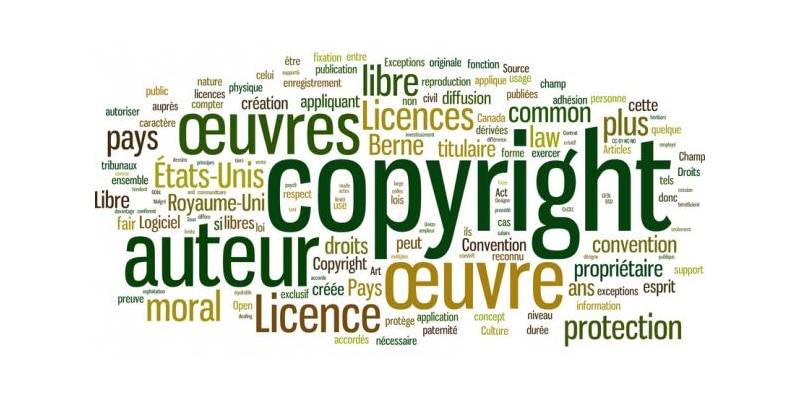
has. Copyright definition
Copyright is the law that protects literary and artistic works such as writings, musical works, works of art (painting, sculpture), etc.
All national laws [1] on copyright give a non -exhaustive list of protected works both in their primary form and in their derivative form, thus taking up the list of article 2 of the Bern Convention on the protection of literary and artistic works.
We mean by primary form: literary works, including computer programs, musical compositions with or without words, audiovisual works, etc.
The derived form results from works that come from other works which are previous to them: translations, adaptations, collections of works, etc.
It should be noted that copyright protects the works, that is to say the expression of a conception, and not ideas [2] . The works are protected by the mere fact of creation regardless of their merit or their destination. No deposit is required as in terms of industrial property.
The revised Bangui Agreement also provides provisions relating to copyright which are contained in Annex VII dealing with literary and artistic property[3].
b. Copyright holders
We must distinguish holders from derivative holders.
Originally
- The author is the natural person who has created a literary or artistic work.
However, the author varies according to the type of work.
- The work of collaboration is the work to the creation of which have contributed two or more authors.
However, it is important to note that each of the co -authors must have an original creative role. Here, all the authors are the first holders of copyright. Example: an encyclopedia.
- The composite work is a new work which incorporates a preexisting work and which is carried out without collaboration but with the agreement of the original author. The author of a composite work is the first copyright holder on it, subject to respect for copyright on the preexisting work.
- The order work is a work created on behalf of a natural or legal person called the sponsor for or not remuneration. The author is the first holder of copyright. However, heritage rights are transferred by contractual provisions to the sponsor. Example: the guide of magistrate and auxiliaries of justice.
- The collective work is a work created by several authors on the initiative and under the responsibility of a natural or legal person who publishes it under his name. Here, the first copyright holder is the person who took the initiative.
Successive holders
These are people who hold their rights not directly from the law, but the first holders, through a unilateral or bilateral legal act. Examples: the assignee, the legatee, etc.
[1] See e.g. art. 5 of law n ° 032-99/year of December 22, 1999 on the protection of literary and artistic property in Burkina Faso; art. 8 of law n ° 2005-30 of April 10, 2006 relating to the protection of copyright and neighboring rights in the Republic of Benin; art. 3 and s. of law n ° 2000/11 of December 19, 2000 relating to copyright and neighboring rights in Cameroon; art. 6 of law n ° 2008-09 of January 25, 2008 on copyright and neighboring rights in Senegal.
[2] Cass. 1 st ch. Civ., May 25, 1992, Boisset and other C/ Sté Worldvision Entreprises Inc, Decision No. 4, Judgments and fundamental judgments of intellectual property, Jean Luc Piotraut, p.8.
[3] These provisions have primautive on those resulting from the various national eponymous laws under the principle of the hierarchy of legal norms, the ABR being a treaty which has a supranational value.


